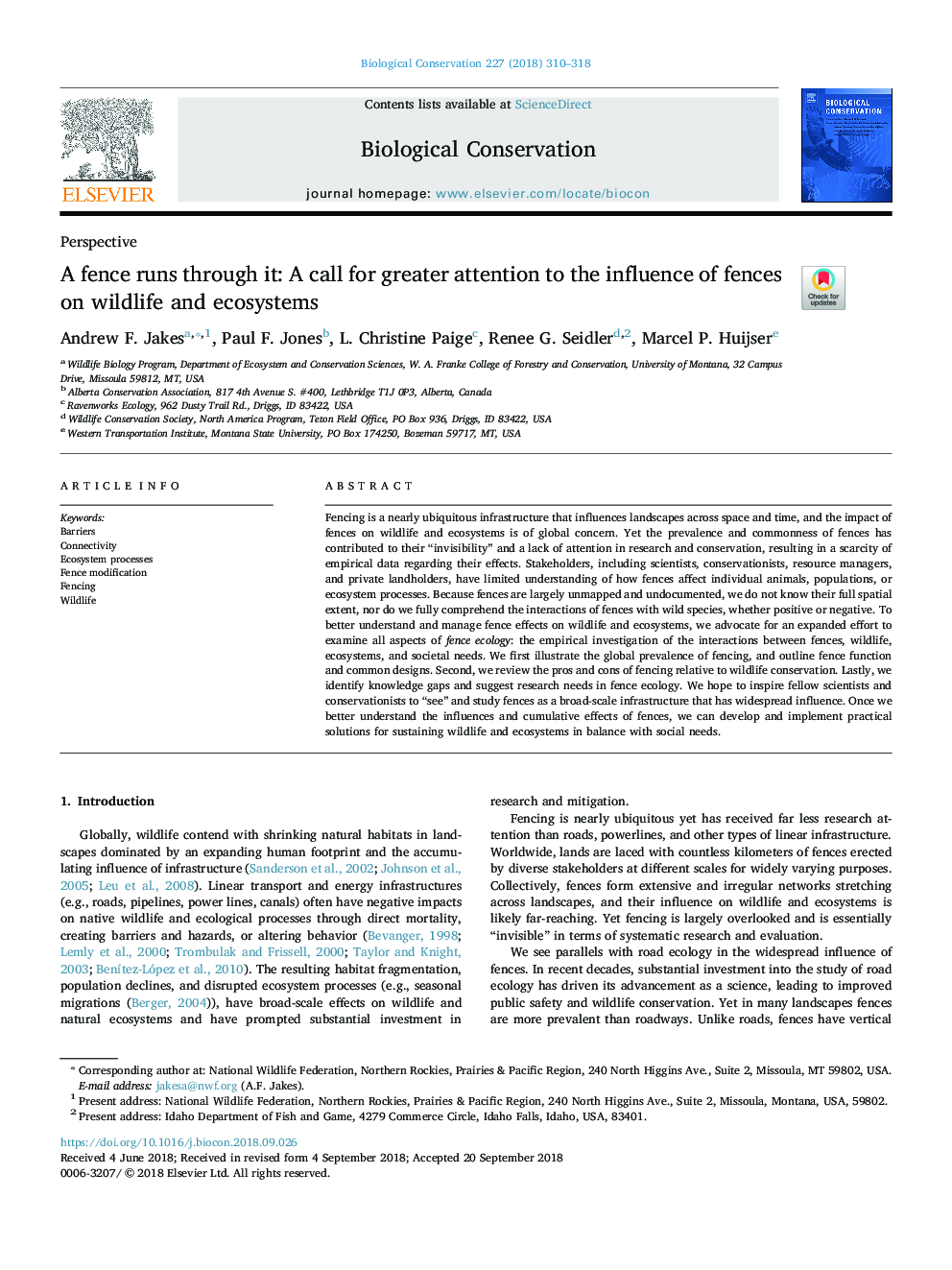| Article ID | Journal | Published Year | Pages | File Type |
|---|---|---|---|---|
| 11030478 | Biological Conservation | 2018 | 9 Pages |
Abstract
Fencing is a nearly ubiquitous infrastructure that influences landscapes across space and time, and the impact of fences on wildlife and ecosystems is of global concern. Yet the prevalence and commonness of fences has contributed to their “invisibility” and a lack of attention in research and conservation, resulting in a scarcity of empirical data regarding their effects. Stakeholders, including scientists, conservationists, resource managers, and private landholders, have limited understanding of how fences affect individual animals, populations, or ecosystem processes. Because fences are largely unmapped and undocumented, we do not know their full spatial extent, nor do we fully comprehend the interactions of fences with wild species, whether positive or negative. To better understand and manage fence effects on wildlife and ecosystems, we advocate for an expanded effort to examine all aspects of fence ecology: the empirical investigation of the interactions between fences, wildlife, ecosystems, and societal needs. We first illustrate the global prevalence of fencing, and outline fence function and common designs. Second, we review the pros and cons of fencing relative to wildlife conservation. Lastly, we identify knowledge gaps and suggest research needs in fence ecology. We hope to inspire fellow scientists and conservationists to “see” and study fences as a broad-scale infrastructure that has widespread influence. Once we better understand the influences and cumulative effects of fences, we can develop and implement practical solutions for sustaining wildlife and ecosystems in balance with social needs.
Related Topics
Life Sciences
Agricultural and Biological Sciences
Ecology, Evolution, Behavior and Systematics
Authors
Andrew F. Jakes, Paul F. Jones, L. Christine Paige, Renee G. Seidler, Marcel P. Huijser,
